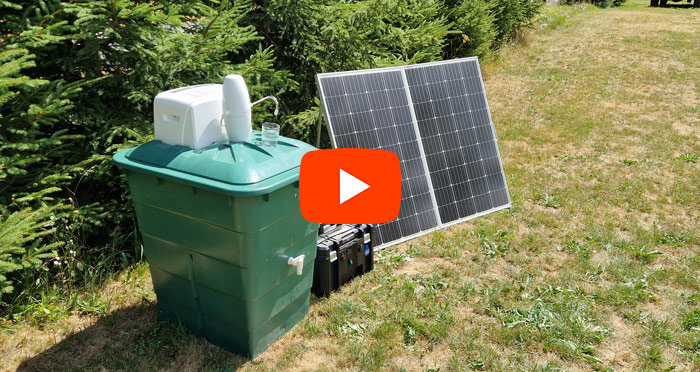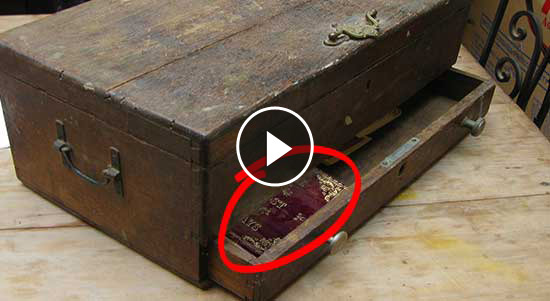Click Here To Join Our Telegram Channel for FREE daily tutorials!
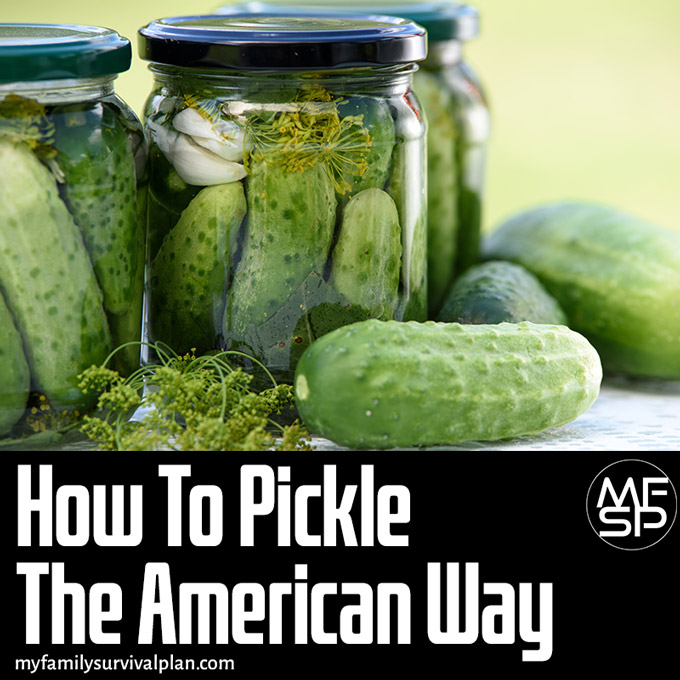
How To Pickle – The American Way. Photo – Pixabay (PD)
I’ve still to meet the one person that doesn’t like pickles. Pickles are already deeply rooted into American culture and they seem to be to everyone’s liking. And why not? Not only do they make pretty much everything taste better, but they’re also exquisite on their own. The most common pickle in the U.S. is the cucumber, but you can pickle almost every vegetable imaginable: carrots, beets, green tomatoes, okra etc. And there are alternatives to canning, you can store them in the fridge just as easily. Let’s take a look at the easiest way of making awesome in-house pickles.
Get the veggies ready to pickle.
Wash the vegetables carefully and cut them into the desired shapes or sizes. I personally recommend chopping them into thin slices, so that they are easier to reach for and snack on in case you feel like it. 🙂 Some vegetables will perform extremely well during the pickling process if they have been blanched (briefly boiled in water) previously. Blanching is excellent for green beans, ginger, peppers, okra and Brussels sprouts. But cucumbers, turnips or tomatoes shouldn’t be blanched at all. If you have your heart set on blanching, this is how you do it: in a boiling pot add 16 cups of water per pound of prepared vegetables. After the water reaches boiling point, add the vegetables and cover with the lid. Let them cook for 3 – 5 minutes. Next place the boiled vegetables into a container filled with ice cold water, which you’ll drain afterwards.

Sort the vegetables.
 Once you’re done with preparing and blanching (if necessary) the veggies, you can sort them out in 6-pin size (2-cup) canning jars, or same size containers made of heatproof plastic or tempered glass. Make sure the ones you buy come with leads and can be tightly sealed. You can also use cans instead of jar-like containers if you plan on storing the pickles at room temperature.
Once you’re done with preparing and blanching (if necessary) the veggies, you can sort them out in 6-pin size (2-cup) canning jars, or same size containers made of heatproof plastic or tempered glass. Make sure the ones you buy come with leads and can be tightly sealed. You can also use cans instead of jar-like containers if you plan on storing the pickles at room temperature.
Flavorings
Adding flavorings comes down to personal taste. There are plenty of recipies around for both dry and fresh flavorings, but if you feel like experimenting, go ahead. The sky’s the limit and you may come up with a million bucks recipe that could make you rich! But for now, here are look at 2 tasty examples for both fresh and dry flavorings:
Fresh flavorings (amount per pint jar): 1 fresh Habanero (or Jalapeno) pepper, 2-4 sprigs sliced or whole Dill, 1/2 whole large clove, sliced Garlic, 2 – 3 inch strips fresh and peeled or 1/2 teaspoon prepared Horseradish, 1 sprig fresh Oregano, 1 tablespoon sliced Shallot. The overall taste of the pickles will be will by spicy and satisfyingly fresh.
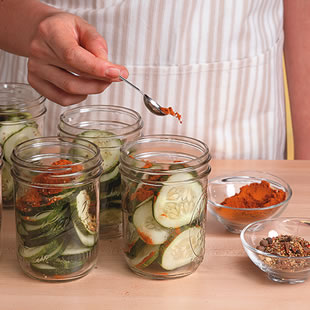 Dry flavorings (amount per pint jar): 1 Bay leaf, 1/2 teaspoon Celery seed, 1 – 3 small whole Dried Chile peppers, 1/2 teaspoon Cumin seed, 1/2 teaspoon Dill seed, 1/2 teaspoon Mustard seed, 1/2 teaspoon Pickling spice, 1/2 teaspoon Turmeric. This recipe gives absolutely delicious pickles, and the unique taste is one of my personal favorites.
Dry flavorings (amount per pint jar): 1 Bay leaf, 1/2 teaspoon Celery seed, 1 – 3 small whole Dried Chile peppers, 1/2 teaspoon Cumin seed, 1/2 teaspoon Dill seed, 1/2 teaspoon Mustard seed, 1/2 teaspoon Pickling spice, 1/2 teaspoon Turmeric. This recipe gives absolutely delicious pickles, and the unique taste is one of my personal favorites.
Making and adding the brine.
The next thing you need to do is to prepare the brine. It’s basically salt water, which will help preserve and add flavor to your pickles. The mixture can be prepared according to personal taste. You can make it sweet, sour or in between. And this is how you do it:
Sweet pickle brine (6 cups): Mix 3 cups of distilled white vinegar (or cider vinegar), 3 of cups water, 1 1/2 cups of sugar and 1 tablespoon + 1 teaspoon of sea salt in a large saucepan (or similar pot). Once the mixture starts to boil, stir until the salt and sugar dissolve completely. Let it boil for 2 – 3 minutes more. Remove from the heat.
Sour Pickle brine (6cups): mix 3 cups of distilled white vinegar (or cider vinegar), 3 of cups water, 2 tablespoons + 2 teaspoons sea salt and 2 tablespoons of sugar in a large saucepan. Once it starts to boil, start stirring until the salt and sugar are dissolved. Boil for 2 – 3 minutes more and remove from the heat.
After you’re done making the brine, all is left is to fill the jars or cans with the concoction. Pour the brine to within half-a-inch if the rim of the jar or can, so that the vegetables are completely immersed in it. If you’re making fridge pickles and using jars, you should refrigerate for at least 24 hours before serving (turnips and okra require a minimum of 1 week). In this case, the pickles will last in the fridge before spoiling for about 1 month. If you’re planning on storing canned pickles at roomed temperature, they will last for about a year if the optimum conditions are met: preparing the pickles according to the process, respecting the terms and conditions of storage and seal tightly each can.
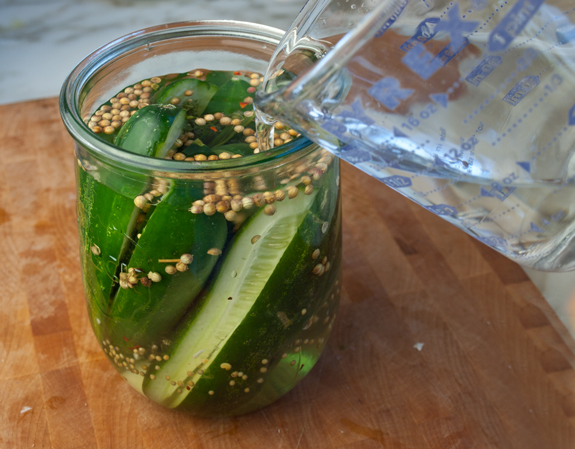
Pickling your own vegetables is fun and easy to do. And it’s a skill you might want to get accustomed to, because the way the economy is heading, pickles could become a rare good rather than a commodity. So making your own it’ll be the only available option.
This Crazy Off Grid Device Literally Makes Drinkable Water From Fresh Air:
According to NASA, the U.S. is expecting a 100-YEAR LONG MEGADROUGHT.
It's already begun. Ask the farmers in California. They know.
Every survivalist knows that water is of critical importance. You NEED an independent water source that you can count on!
As an interesting "survival rehearsal" - imagine that you turned the tap on right now and nothing came out. How long would you last?
But what if there was another water source literally hidden in plain sight. That's right, I'm talking about the atmosphere!
The amazing thing about getting water from the natural moisture in the air... is that it is ALWAYS available.
This gives you real water security!
Learn more about how to tap into "Nature's secret water reservoir" and stay hydrated when TSHTF!
Watch the video:
😳 What Tinnitus Does To Your Brain Cells (And How To Stop It)
After 47 years of studies and countless brain scans done on more than 2,400 tinnitus patients, scientists at the MIT Institute found that in a shocking 96% of cases, tinnitus was actually shrinking their brain cells.
As it turns out, tinnitus and brain health are strongly linked.
Even more interesting: The reason why top army officials are not deaf after decades of hearing machine guns, bombs going off and helicopter noises…
Is because they are using something called "the wire method", a simple protocol inspired by a classified surgery on deaf people from the 1950s...

I Can't Help Showing This Off:
If you haven't heard of Claude Davis yet do yourself a huge favor and watch this video.
One of the smartest guys I ever had the pleasure of meeting, Claude set-up a unique prepping system that changed his life forever.
I already tried it myself and let me tell... you I was completely blown away... His surprising tactics could make your life easier and give you the peace of mind you deserve.
Don't just take my word for it... watch his short video and decide for yourself.

Most People Don't Have The Guts To Try This:
An amazing discovery in an abandoned house in Austin, Texas: A lost book of amazing survival knowledge, believed to have been long vanished to history, has been found in a dusty drawer in the house which belonged to a guy named Claude Davis.
Remember... back in those days, there was no electricity... no refrigerators... no law enforcement... and certainly no grocery store or supermarkets... Some of these exceptional skills are hundreds of years of old and they were learned the hard way by the early pioneers.
>> Click here to find out about them now
We've lost to history so much survival knowledge that we've become clueless compared to what our great grandfathers did or built on a daily basis to sustain their families.
Neighbors said that for the last couple of years Claude has tried to unearth and learn the forgotten ways of our great-grandparents and claimed to have found a secret of gargantuan proportions. A secret that he is about to reveal together with 3 old teachings that will change everything you think you know about preparedness:
>>> Click Here To Watch His Short Video <<<

More Off-Grid And Survival Resources:

What REALLY Happens When You Bury a Shipping Container? (Hint: It's A Bit Crazy...)
Shipping containers are all the rage - but if you are thinking about buying one, you MUST watch this video first:
There's a general belief that if you bury a shipping container you can create an awesome root cellar / storm shelter / survival bunker.
But is a shipping container strong enough to handle the pressure?
Watch the video to see what happens:
What Really Happens When You Bury a Shipping Container? (Click To Watch Video)



